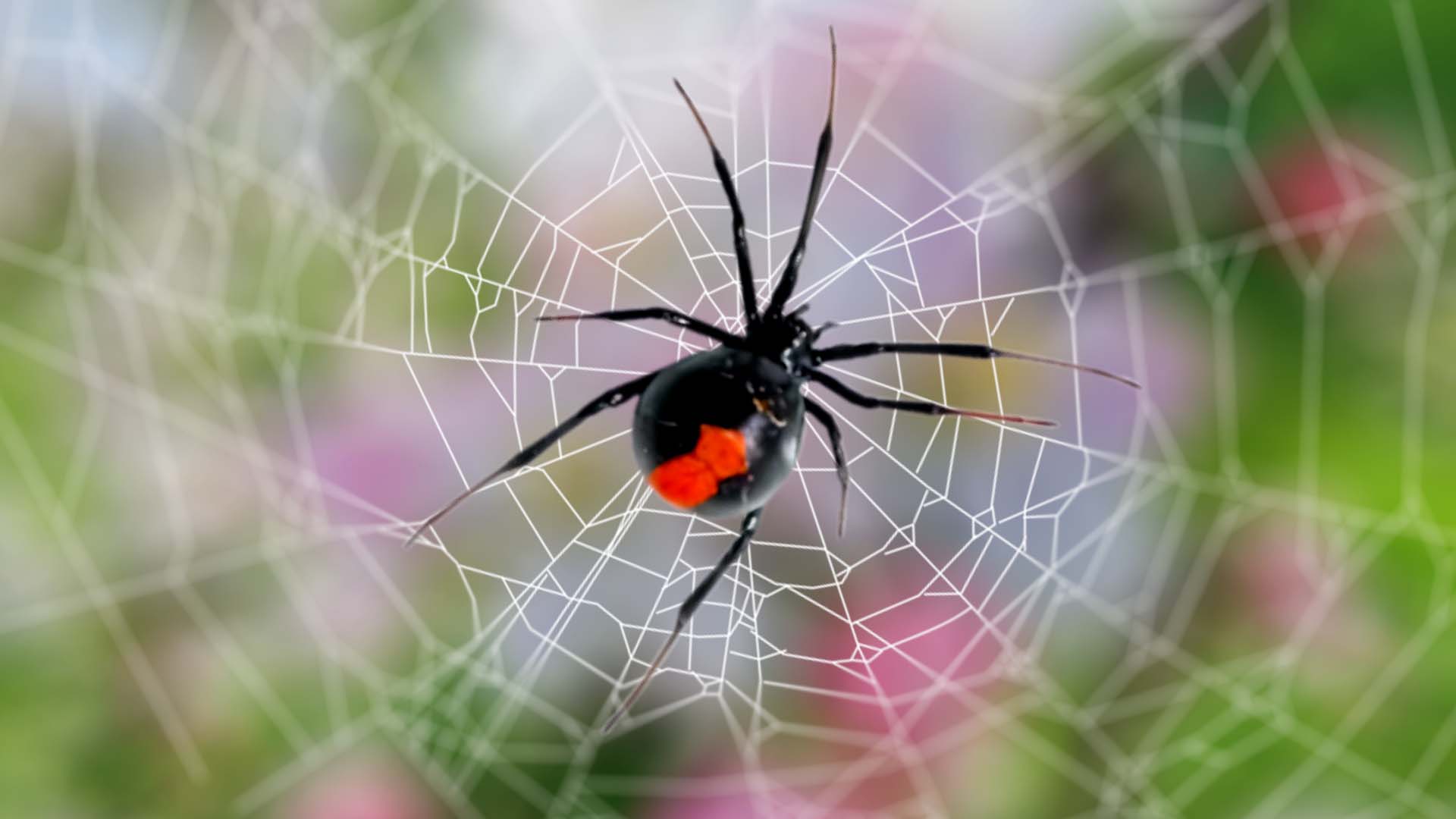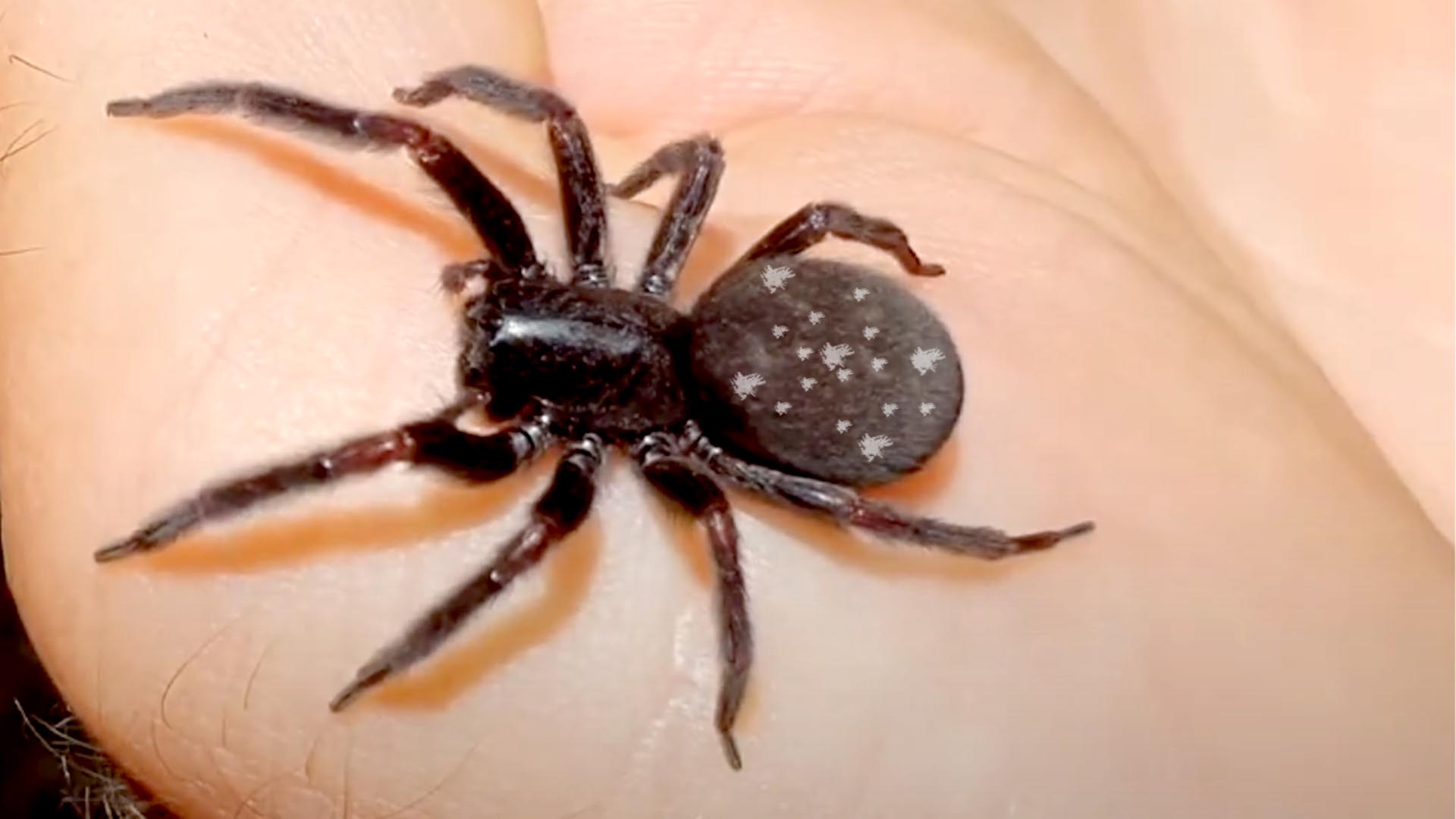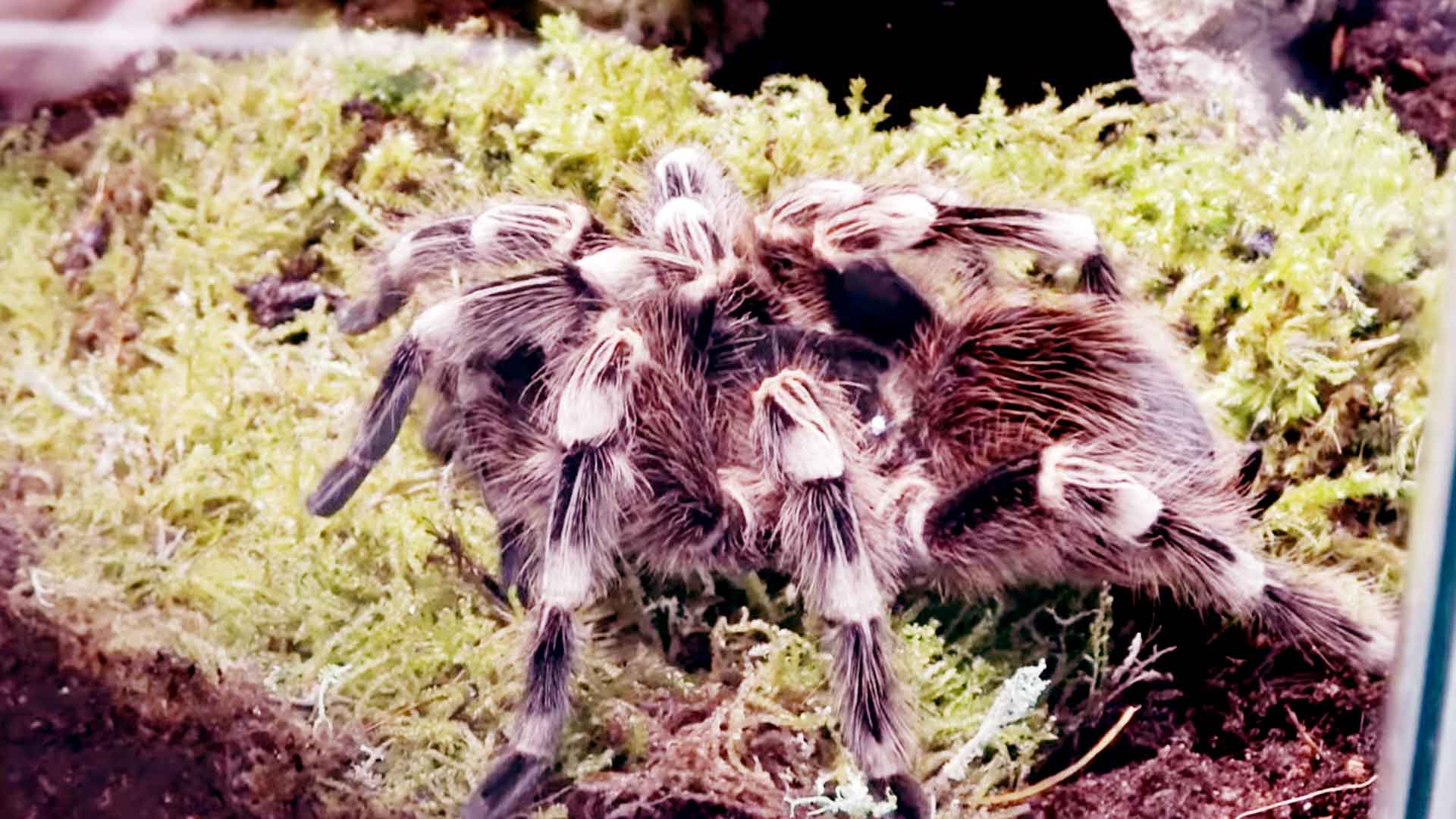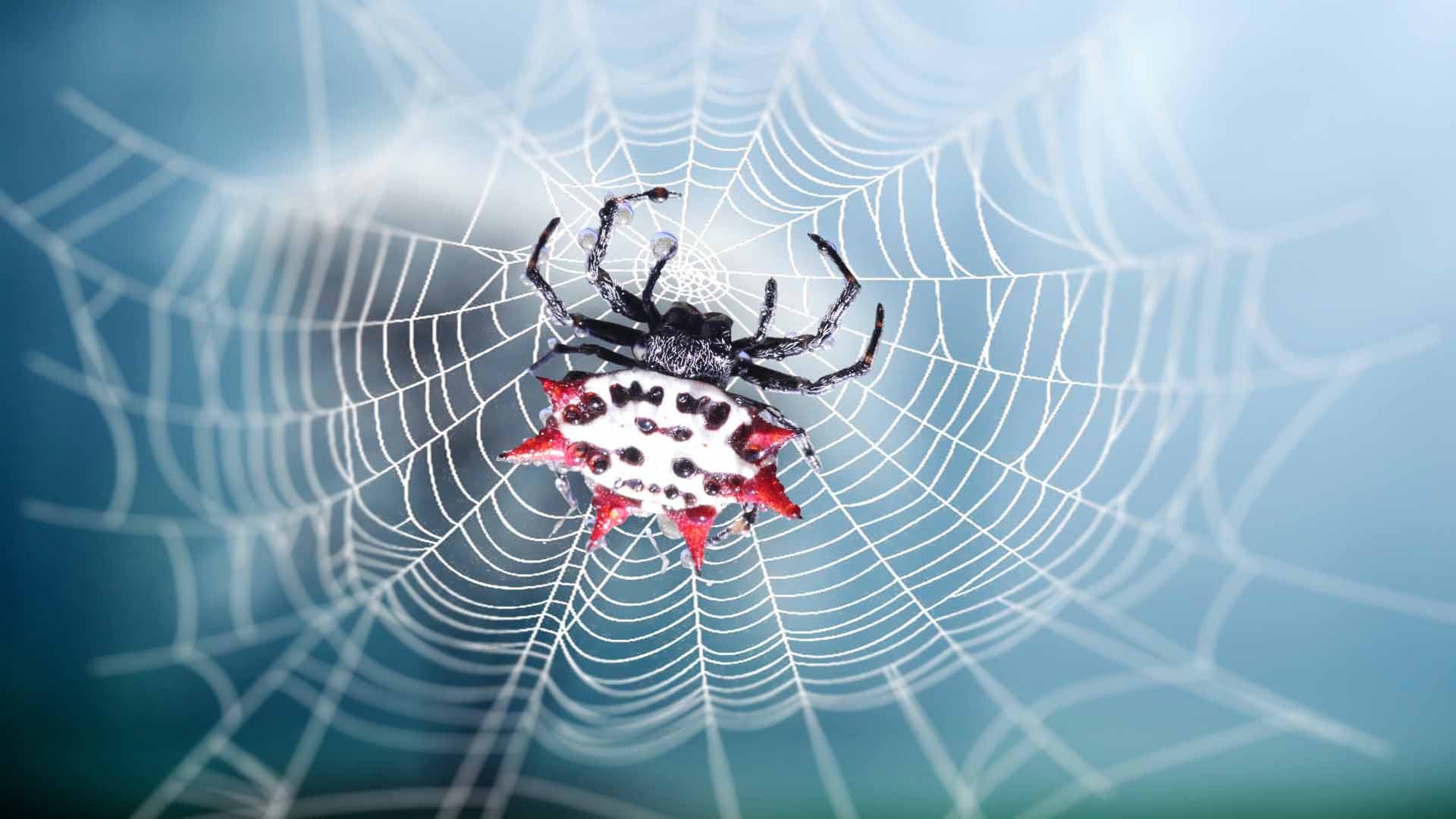When it comes to spiders that capture our attention, Black Widows are often at the top of the list due to their distinctive appearance and potent venom. However, the world of arachnids is full of surprises, and there are several other spider species that closely resemble the infamous Black Widow.
In this article, we’ll explore eight such spiders, their color patterns, sizes, behaviors, and locations, all while highlighting their striking resemblance to the Black Widow.
Brown Widow Spider
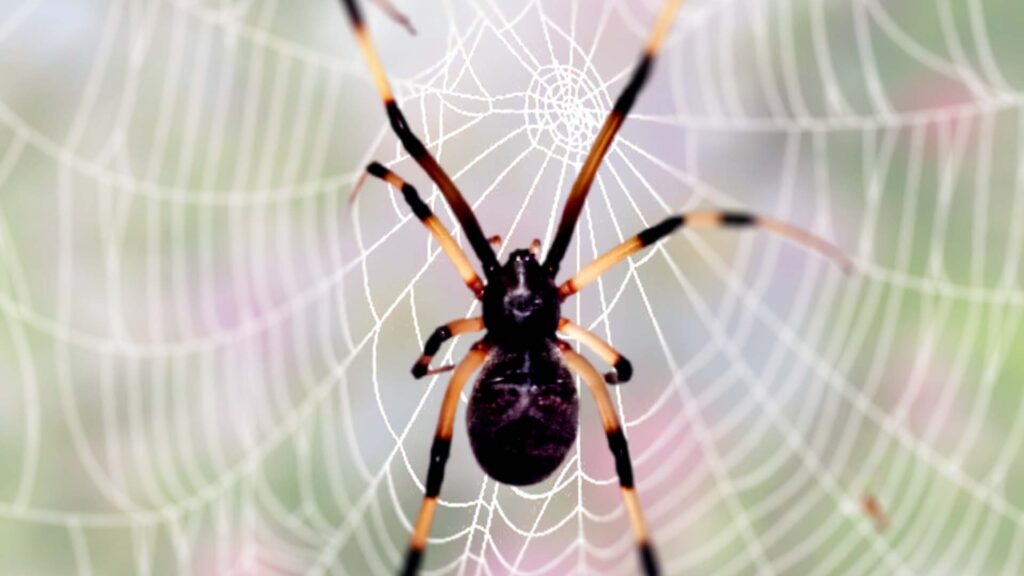
The Brown Widow Spider (Latrodectus geometricus) is an arachnid that often garners attention due to its resemblance to the notorious Black Widow. Measuring around 1 to 1.5 inches in leg span, this spider is relatively smaller than the Black Widow but shares some of its key characteristics.
Color Pattern: The Brown Widow boasts a light to medium brown color, with distinct markings on its abdomen. One of the key identification features is the orange hourglass shape on the underside of its abdomen. This marking, though different in color, closely mimics the iconic red hourglass of the Black Widow.
Behaviors: Like its namesake, the Brown Widow is known for its reclusive nature. It prefers dark and sheltered areas such as garages, sheds, and outdoor furniture. The spider constructs irregular webs, often near the ground. While its venom is less potent compared to the Black Widow, it can still cause discomfort in humans, resulting in symptoms like pain and muscle cramps.
Location: Native to South Africa, the Brown Widow Spider has managed to establish itself in various parts of the world, including the southern United States. Its expansion is likely due to its ability to adapt to various environments and its tendency to hitch rides on shipping containers.
Brown Widow Spider vs. Black Widows
Both brown and black widows are members of the genus Latrodectus. The brown widow, prevalent in warm climates globally, is usually a pale brown color, contrasting with the glossy black of the black widow. Each has an hourglass marking, though the brown widow’s might be orange or even yellow. Despite sharing the same potent neurotoxin, brown widow bites tend to be less severe due to the smaller amount of venom they inject. Moreover, brown widows are somewhat more timid than their black counterparts.
Red Widow Spider
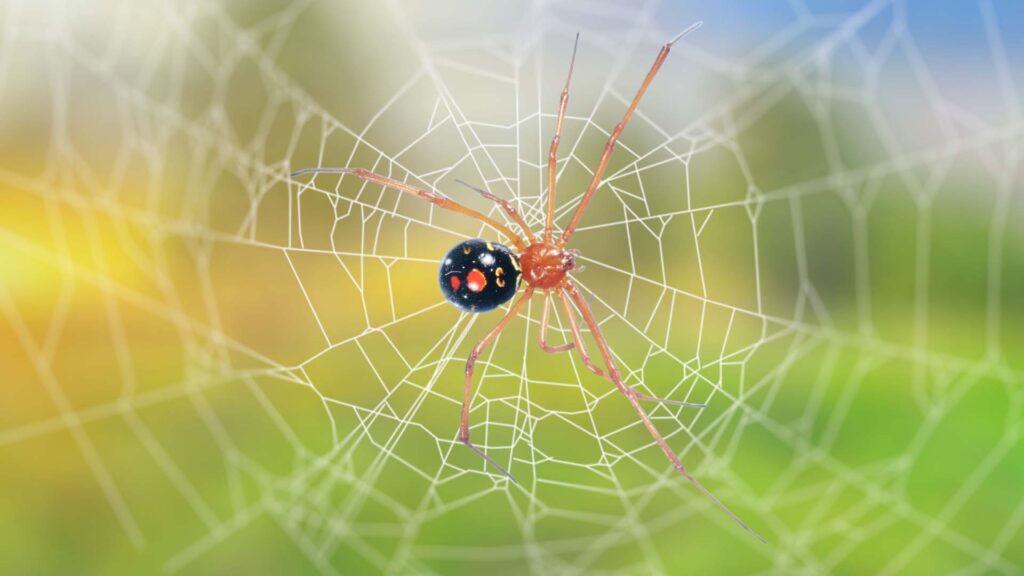
The Red Widow Spider (Latrodectus bishopi) is another member of the Widow family that shares some striking visual similarities with the Black Widow. Native to the southeastern United States, this spider is known for its vibrant appearance.
Color Pattern: As the name suggests, the Red Widow boasts a rich reddish-brown color, particularly on its cephalothorax. Its abdomen features an hourglass marking, which can vary in color from red to orange. This hourglass marking, while resembling the Black Widow’s, sets it apart due to its distinctive hue.
Behaviors: Red Widows are skilled web weavers, often creating irregular webs close to the ground. They tend to inhabit palmetto bushes and other dense vegetation. Like other members of the Widow family, the Red Widow’s venom contains neurotoxins that can cause discomfort and pain in humans.
Location: Endemic to the United States, the Red Widow Spider is most commonly found in Florida and its neighboring states. Its preference for warm and humid environments contributes to its limited distribution.
Red Widow Spider vs. Black Widows
Red widows are a more localized species found mainly in Florida’s sand dunes and scrub environments. The red cephalothorax and legs combined with a black abdomen featuring red or yellow patterns differentiate them visually from the uniformly black body of black widows. Like other Latrodectus species, they have potent venom, but their habitat and nature make encounters (and thus bites) rare.
False Black Widow
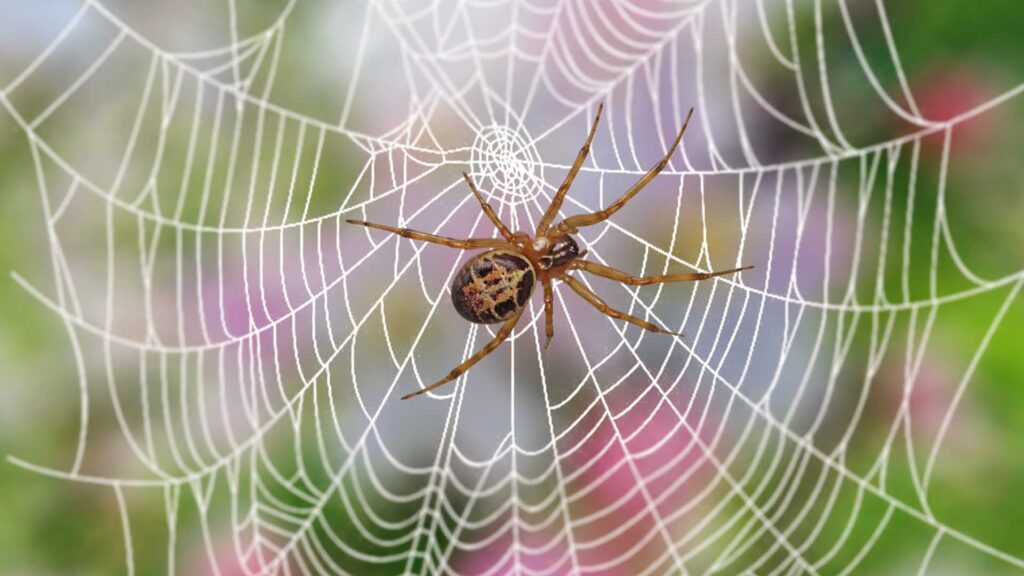
Often mistaken for the Black Widow, the False Black Widow (Steatoda grossa) is a spider that shares a resemblance to its more notorious counterpart.
Color Pattern: The False Black Widow varies in color, ranging from dark brown to black. It features a bulbous abdomen with cream-colored markings that can be reminiscent of the Black Widow’s hourglass.
Behaviors: False Black Widows are commonly found in human habitats, including houses, sheds, and gardens. They spin tangled cobwebs and are known to be opportunistic predators, feeding on insects that become trapped in their webs. While their venom is not as potent as the Black Widow’s, a bite from this spider can still cause localized pain and discomfort.
Location: This spider species has a global distribution, with populations found in North America, Europe, and other parts of the world.
False Black Widow vs. Black Widows
False black widows, known scientifically as Steatoda grossa, closely resemble black widows, though they lack the distinctive hourglass mark and tend to be more brownish. Their venom can cause discomfort, and while the symptoms might resemble the effects of a black widow bite, they are usually much less severe and without the systemic effects.
Noble False Widow
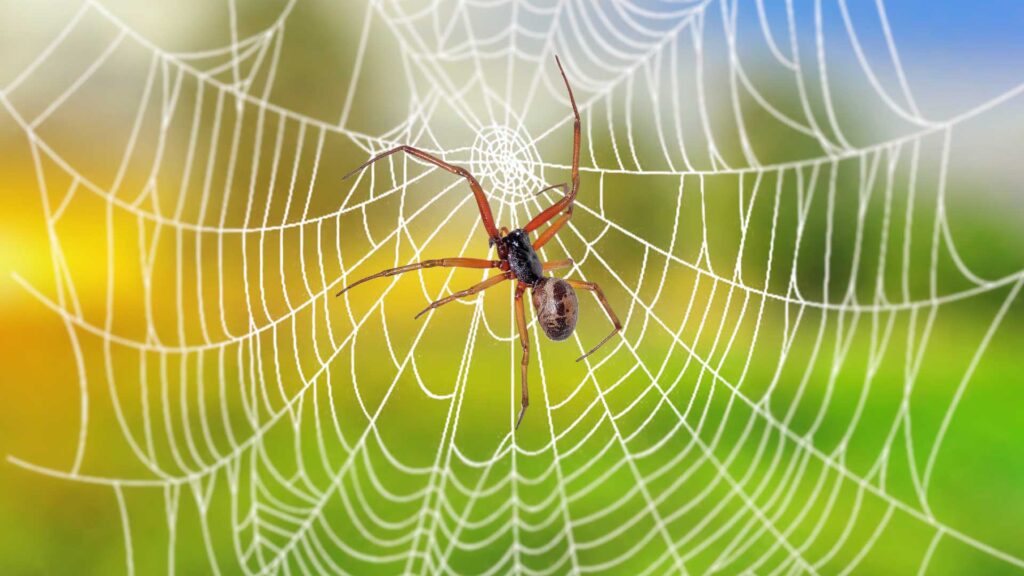
The Noble False Widow (Steatoda nobilis) is a spider species that often draws attention due to its physical resemblance to the Black Widow.
Color Pattern: The Noble False Widow is typically dark brown with a glossy appearance. Its abdomen displays cream-colored markings, including a pattern that can sometimes be reminiscent of the hourglass shape seen on the Black Widow.
Behaviors: Like the False Black Widow, the Noble False Widow prefers human-made habitats such as houses and gardens. It constructs tangled cobwebs to capture its prey. While its venom is not as potent as that of the Black Widow, its bites can cause discomfort and localized reactions in humans.
Location: Native to Madeira and the Canary Islands, the Noble False Widow has expanded its range to the United Kingdom and other parts of Europe.
Noble False Widow vs. Black Widows
The noble false widow, or Steatoda nobilis, is another lookalike but is distinguishable by its brown color and mottled patterns on the abdomen. Originating from the Canary Islands and Madeira, they have since been introduced in Europe, where they are often mistaken for black widows. While their bites can cause local pain and some systemic symptoms, they aren’t as severe as those from a black widow.
Triangulate Cobweb Spider
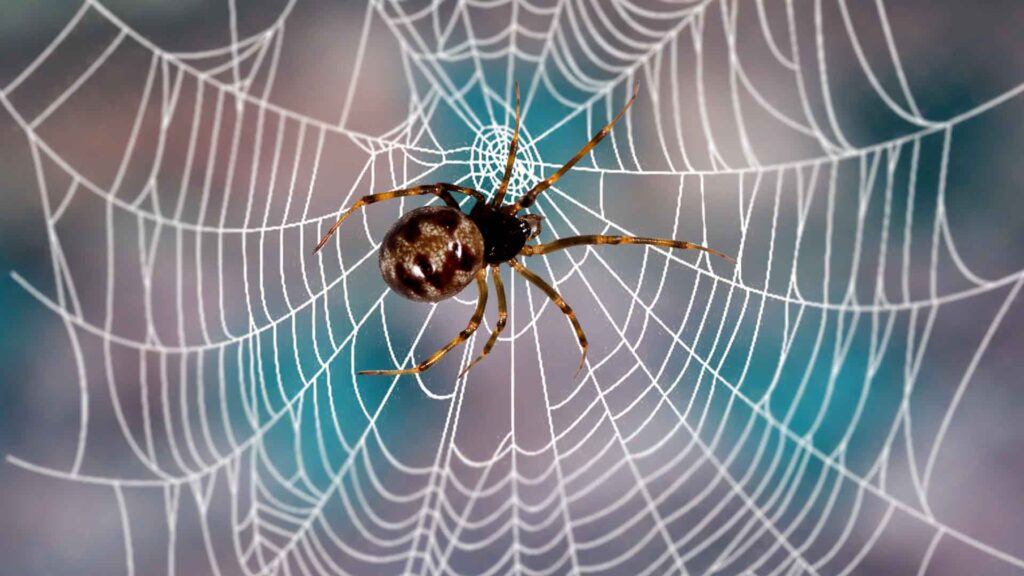
The Triangulate Cobweb Spider (Steatoda triangulosa) is yet another spider that bears a resemblance to the Black Widow.
Color Pattern: The Triangulate Cobweb Spider is typically dark brown to black and features a unique triangular pattern on its abdomen. While this pattern is distinct from the hourglass shape of the Black Widow, the overall appearance of the spider can be reminiscent.
Behaviors: This spider prefers to inhabit dark and sheltered areas, including corners of buildings and outdoor structures. It constructs cobwebs with an irregular pattern to catch its prey. While its venom is not considered dangerous to humans, a bite might cause localized discomfort.
Location: Native to North America, the Triangulate Cobweb Spider can be found in various regions across the continent.
Triangulate Cobweb Spider vs. Black Widows
The triangulate cobweb spider, known as Steatoda triangulosa, can be identified by the triangle-shaped patterns on its abdomen. These patterns, coupled with its lighter brown color, distinguish it from the black widow. Their venom is not considered medically significant to humans.
Red-Spotted Ant Mimic Spider
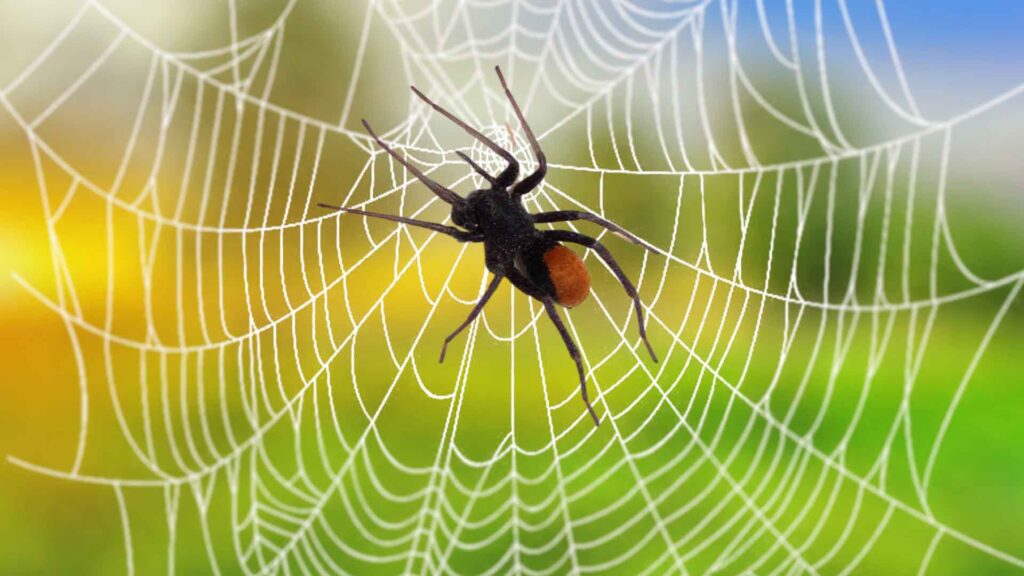
As its name suggests, the Red-Spotted Ant Mimic Spider (Castianeira descripta) imitates the appearance of ants, and it also bears some resemblance to the Black Widow due to its coloration.
Color Pattern: This spider has a predominantly black body with red spots on its abdomen. While its overall appearance might not be as close to that of the Black Widow as some other species on this list, its dark coloring and red markings can evoke a resemblance.
Behaviors: The Red-Spotted Ant Mimic Spider is a predator of ants, using its appearance to infiltrate ant colonies and capture its prey. It doesn’t build traditional webs but relies on its mimicry and hunting skills.
Location: Found in North America, this spider is often encountered in wooded and grassy areas.
Red-spotted Ant Mimic Spider vs. Black Widows
The red-spotted ant mimic spider, Castianeira descripta, as its name suggests, mimics ants. With its much smaller size and distinctly different morphology, it’s easily differentiated from black widows. They are harmless and typically found throughout the eastern United States.
Domestic House Spider
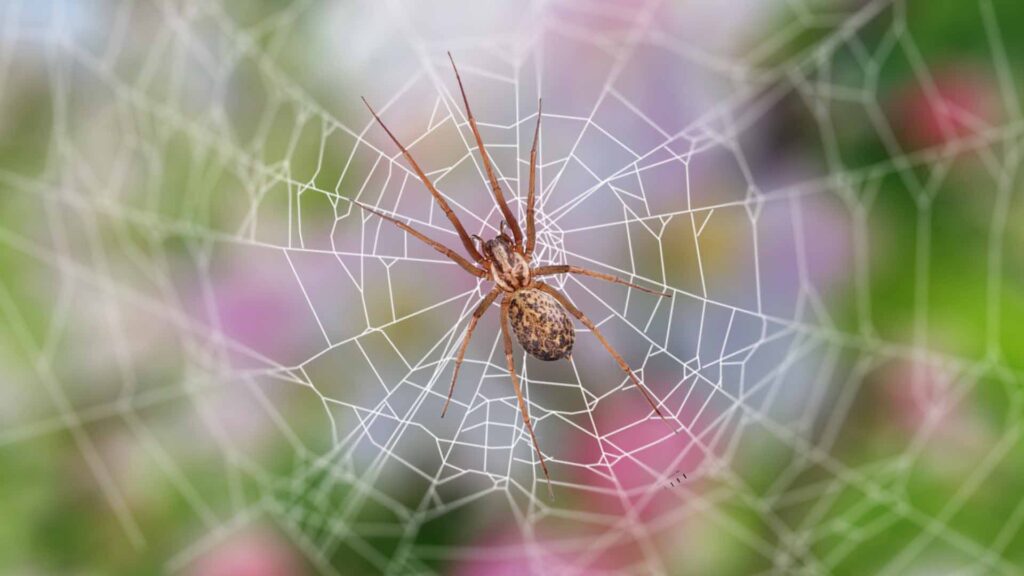
The Domestic House Spider (Tegenaria domestica) is a common arachnid often found in homes and buildings, and it can sometimes be mistaken for a Black Widow due to its size and coloration.
Color Pattern: This spider varies in color from brown to gray and features a somewhat mottled appearance. While it lacks the distinct markings of the Black Widow, its size and overall color can lead to initial confusion.
Behaviors: Domestic House Spiders are skilled web builders, creating funnel-shaped webs in corners and crevices. They are known to be opportunistic hunters, preying on insects that become trapped in their webs.
Location: As the name suggests, this spider is commonly found indoors in homes and other human-made structures.
Domestic House Spider vs. Black Widows
Domestic house spiders, Tegenaria domestica, are larger, with a brown, streaky appearance and a tear-shaped abdomen. While they might seem intimidating due to their size, they are not dangerous, and their venom doesn’t present significant harm to humans.
Rabbit Hutch Spider
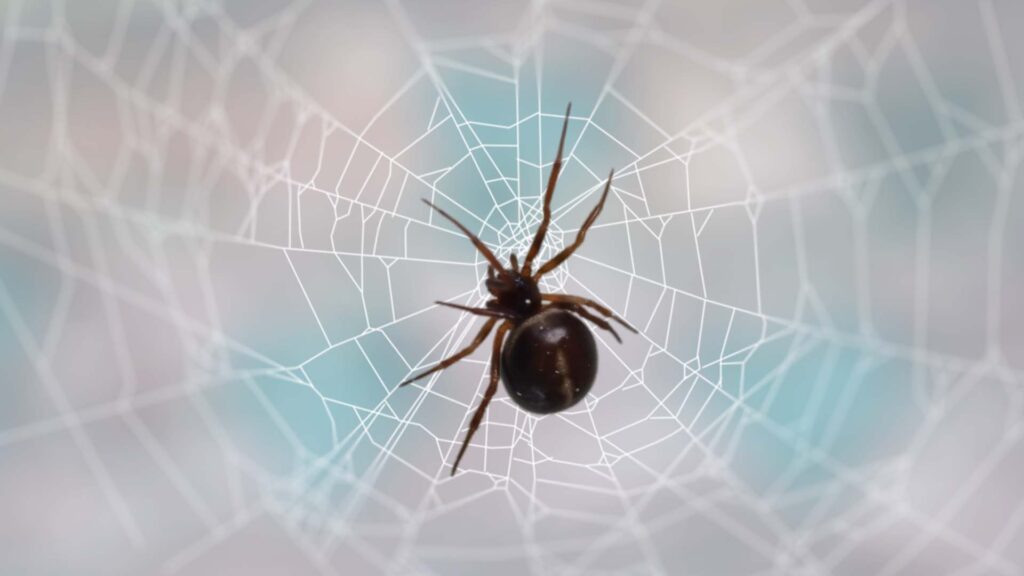
The Rabbit Hutch Spider (Steatoda bipunctata) is a small spider that can resemble the Black Widow due to its coloration and markings.
Color Pattern: The Rabbit Hutch Spider is typically dark brown to black, with a light-colored band on its abdomen that can sometimes resemble the hourglass shape of the Black Widow.
Behaviors: This spider often resides in outdoor structures like sheds and rabbit hutches. It constructs irregular cobwebs to capture its prey. While its venom is not considered dangerous to humans, a bite might result in localized discomfort.
Location: Found in various parts of the world, including Europe and North America, the Rabbit Hutch Spider prefers outdoor environments.
Rabbit Hutch Spider vs. Black Widows
The rabbit hutch spider, Steatoda bipunctata, is mainly brown with some distinctive markings on its abdomen. These spiders, commonly found in Europe, are relatively harmless to humans, with their bite causing only minor discomfort.
Conclusion:
There are eight spiders that look like Black Widows: Brown Widow Spider, Red Widow Spider, False Black Widow, Noble False Widow, Triangulate Cobweb Spider, Red-Spotted Ant Mimic Spider, Domestic House Spider, and Rabbit Hutch Spider.

